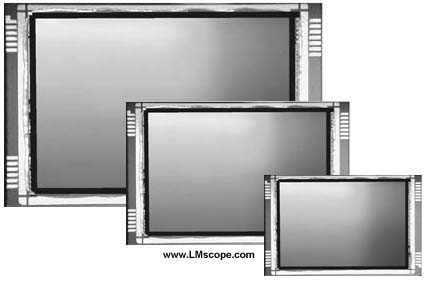

Impact of the number of pixels on image quality in microscopy

Particularly with compact cameras, it has been demonstrated that a large number of pixels (picture elements) does not always have a favourable influence on image quality. This is due, on the one hand, to the fact that compact cameras are becoming increasingly smaller, and therefore the size of the image sensors must also necessarily be reduced. On the other hand, the competitive market is demanding an ever-increasing number of pixels. This means that more and more picture elements (pixels) must be made to fit onto smaller sensors. The result is a reduction in the sensitivity of the camera and an increase in the signal-to-noise ratio. Practically speaking, this means that the colour reproduction is not optimal, and that the image itself appears washed out, like a poor copy.
Specifically for microscopy purposes, digital cameras with 5 to 8 million pixels are perfectly adequate, as the limitation comes exclusively through the numerical aperture of the lens. Even with the best plan apochromatic lenses currently available on the market, a higher resolution cannot be achieved, despite of the higher number of pixels.
From our point of view, an investment in plan fluoride or plan apochromatic microscope lenses would be more useful than a higher number of pixels.
Caution! This manual is protected by copyright. Unauthorised reproduction thereof, in whole or in part, is punishable by law. Only use with MICRO TECH LAB’s approval.
New LM Digital Adapter for: Nikon Z9 / Nikon Z8 / Sony Alpha 7R V / Canon EOS R3 / Canon EOS R6 Mark II / Canon EOS R8 / Sony Alpha 7R IV / Canon EOS R5 II / Nikon Z6III / Canon EOS R5 / Canon EOS R6 / Nikon Z6 / Nikon Z6II / Nikon Z7 / Nikon Z7II / Canon EOS R / Canon EOS Ra (Astro) / Nikon Z5 / Canon EOS RP / Canon EOS R7 / Leica SL2-S / Canon EOS R10 / Nikon Z50 II / Nikon Z30 / Nikon Z fc / Olympus OM-1 / Olympus OM-D E-M1 Mark III / Canon EOS R100 / Fujifilm X-H2S / Pentax K-1 / Fujifilm X-S10 / Fujifilm X-E4 / Fujifilm X-Pro3 / Olympus OM-D E-M1X / Sony Alpha 6400 / Olympus OM-D E-M5 III / Fujifilm X-T5 / Fujifilm X-T4 / Fujifilm X-T3 / Canon EOS M6 Mark II / Panasonic Lumix DC-G9 / Canon EOS M200 / Canon EOS M50 Mark II / Canon EOS M50 / Olympus OM-D E-M5 II / Leica M11 / Leica M10 Monochrom / Olympus PEN-E-PL9 / Leica M10 / Olympus PEN-F / Olympus OM-D E-M5 Mark II /